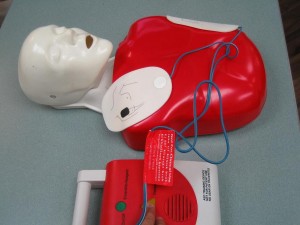Cardiac arrest involves the abrupt cessation in the beating of the heart. This causes the cessation of the pumping of blood throughout the body. If the heartbeat is not restarted within minutes, death is inevitable.
The condition is different from a heart attack which occurs when a region of the heart muscle dies since the flow of blood to it has been obstructed.
What are the causes?
Cardiac arrest is typically caused by an issue with the electrical system in the heart. In most instances, the rhythm of the heart is too rapid and erratic which is called ventricular fibrillation. The ventricles quiver rapidly and could no longer pump blood.

Nevertheless, cardiac arrest often occurs to those who are not aware that they have a heart condition. Other health conditions can increase the risk for a deadly heart rhythm such as:
- Heart attack
- Heart disease such as coronary artery disease
- Heart failure
- Hypertrophic cardiomyopathy
The treatment of these conditions can reduce the risk for sudden cardiac arrest. Medications can often control the heart rhythm. In some cases, a device called an implantable cardioverter-defibrillator is used which is placed within the chest to monitor for a dangerous heart rhythm. If the heart has a dangerous rhythm or ceases to beat, the device can shock it back into the normal rhythm.
Management
An individual with cardiac arrest can be assisted by performing CPR or using a device called an automated external defibrillator (AED). This device delivers a shock so that the heart returns to its normal rhythm.
Once the emergency team arrives, the individual is given emergency care to keep the heart and lungs functioning to prevent impairment due to inadequate oxygen. The doctor will determine the root of cardiac arrest in order to avert another one.
Disclaimer / More Information
The information posted on this page on cardiac arrest is for learning and educational purposes only. To learn to how to manage an individual experiencing cardiac arrest, register for first aid training at one of our training centers located throughout Canada. The training centers are in Edmonton, Calgary, Vancouver, Kelowna, Surrey, Winnipeg, Toronto, Ottawa and Halifax.
